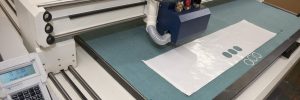 CNC routing services are among several derived from CNC machining, a manufacturing platform composed of pre-programmed computer software that manages factory tools and machinery. Short for ‘Computer Numerical Control,’ CNC machining controls a range of complex machinery including grinders, lathes, mills and routers. Easily programmed, a single set of prompts can accomplish three-dimensional cutting tasks for a range of material such as varying plastics like acrylic, polycarbonate, HDPE, LDPE, PVC, ABS, or nylon, plywood, foams, fiberglass, cork, foil, nomex, and synthetic rubbers like silicone, neoprene, and urethane.
CNC routing services are among several derived from CNC machining, a manufacturing platform composed of pre-programmed computer software that manages factory tools and machinery. Short for ‘Computer Numerical Control,’ CNC machining controls a range of complex machinery including grinders, lathes, mills and routers. Easily programmed, a single set of prompts can accomplish three-dimensional cutting tasks for a range of material such as varying plastics like acrylic, polycarbonate, HDPE, LDPE, PVC, ABS, or nylon, plywood, foams, fiberglass, cork, foil, nomex, and synthetic rubbers like silicone, neoprene, and urethane.
CNC machines are vital to a number of manufacturing industries. Aerospace and defense, medical, lighting, HVAC systems, laundry, cryogenics, refrigeration, renewable energy, technology and electronic sectors, textile, automotive, and industrial equipment all rely on CNC machining for processes and production.
CNC machining offers advantages of computer precision over manual control, where input commands that guide the machining tools are controlled by live operators throughout the process. Though many variants exist for CNC machining, one popular application for this platform is the CNC router. CNC routers reduce waste and increase productivity and efficiency, producing various items in a much shorter amount of time than using other machines.
Why Choose CNC Routing Services
How do CNC routers work?
Similar to the traditional handheld router used for cutting various materials, the CNC router machine uses computer numerical control programming to route tool paths. CNC routers are controlled by a series of pre-programmed computer commands. G-code programming is the most common programming language used for CNC in addition to other languages such as Mazak or Heidenhain. Once the coordinates are programmed using CAM – or computer-aided manufacturing – software, the file is converted into the G-code numerical control programming language to perform cutting.
How do I select the best material for my application?
Because of the availability of a wide range of materials, selecting the ‘best’ material depends in large part on the thermal and mechanical properties required of the application. For planning purposes, your design requirements should take into account the other types of material your application will interact with, along with the environmental conditions the component will function in.
Is CNC cutting accurate?
Position accuracy and repeatability are performance indicators for CNC cutting. CNC cutting accuracy, in general, can achieve tight tolerances within +/-0.005” to localized areas. Repeatability is even better. Well-tuned systems can typically achieve repeatability tolerances of 0.002” or better.
Do I need to provide CAD files?
Actually, you do not need to provide a CAD file per se, but some type of file must be submitted to be converted into a CAD file. Any existing design files like DXF, DWG, BMP, JPG/JPEG and PDF can be submitted for conversion or the project development team can provide technical drawings if necessary.
How accurate are CNC routers?
Today’s CNC routers utilized advanced robotic technology for a perfect fit and cut. State-of-the-art CNC cutter and router machines, once programmed, make precise, repeatable cuts to 1/1000th of an inch. CNC routers efficiently and accurately cut, drill, crease and router parts in a wide variety of sizes.
Do you have minimum quantities?
High-quality CNC cutting and routing services are designed to serve clients large and small. Because manufacturing and production needs vary, CNC routing services can produce a single prototype as well as provide low-to-high volume runs, small-to-large runs, and high volume, large scale production runs.
